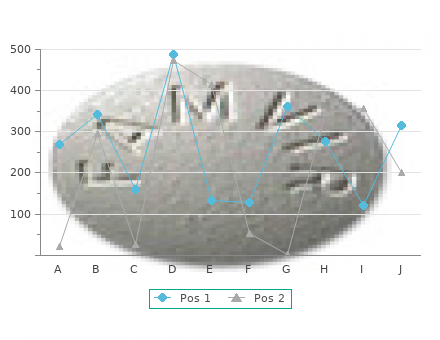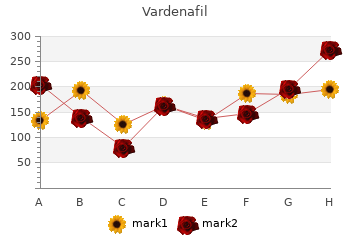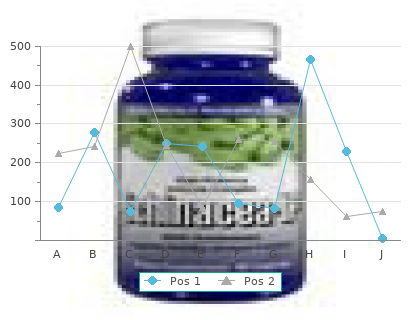Vardenafil
2018, Montreat College, Tufail's review: "Vardenafil 20 mg, 10 mg. Only $0,85 per pill. Purchase cheap Vardenafil online no RX.".
Morinda citrifolia (Noni): A literature review and recent advances in Noni research 20 mg vardenafil with amex. Dual role of prostratin in inhibition of infection and reactivation of human immunodeficiency virus from latency in primary blood lymphocytes and lymphoid tissue. Traditional medicine, sometimes also referred to as popular or folk medicine, occupies the ground between the use of natural medicinal substances and the traditional religious quest for the victory of the forces of good in an uncertain world. Although the pharmacology of Biblical and Talmudic medicine, as well as that of mediaeval Jewish practitioners, may seem strange to the modern health consumer, Jewish folk practices have remained remarkably persistent, surviving to the present day. Jewish popular medicine has often been seen as the superstitious legacy of the encounter between Jews and their neighbours, especially in the medi- aeval Christian and Arab worlds, over millennia of dispersion. Thus, at times this tradition has been seen as primitive, the product of an era best forgotten, whereas others, less disparagingly, see elements of a rich histor- ical tradition in these practices. In recent years, especially following the movement of the previously marginalised Jews from eastern communities into the political mainstream in Israel, there have been serious attempts to understand this folk medicine culture in its proper context. It utilises the canon of Hebrew scriptures in the Tanach as understood in the voluminous commentaries and discourses of the rabbis recorded in the Mishna and Gemara. Together, these works, known collectively as the Talmud, have formed the basis for further rabbinic elaboration over the millennium and a half since the final redaction of the Gemara. Jewish tradi- tional medicine also uses the rich symbolism inherent in Jewish ritual and the Hebrew language. Thus, the fragrant herbs used at the havdalah cere- mony at the end of the Sabbath could be used as an inhalation for colds, and 294 | Traditional medicine a treatment for diarrhoea, high blood pressure, hair loss and pestilence during the following week. These included Egypt, where the Israelites lived for some centuries, to Mesopotamia, home of the Jewish patriarchs. In differing periods Egyptian and Mesopotamian medicine were highly esteemed even though many of the medications came with their own associated religious and cultural practices, often inimical to that of Israel. Further, Israel enjoys a special climate located between sea and desert, with such remarkable land features as the Dead Sea and the River Jordan, and is located at the conjunc- tion of three continents with their varied plant and animal populations. Medicine in the Bible The Hebrew Bible records that the kohenim (priests) supervised cases of contagious diseases but, unlike in other contemporary cultures, did not perform the functions of a physician. Ben Sira wrote in the Apocrypha: Honour a physician with the honour due unto him for the uses which ye may have of him, for the Lord hath created him. The Lord has created medicines out of the earth; and he that is wise will not abhor them. However, it is difficult to find any reference to any medication taken for internal use, although many of the products that are mentioned throughout its text do have a medicinal component. There are indications of the under- standing of quarantine and health protection, and sanitary regulations concerned the eating of meat, the quick carrying out of burials and social hygiene. Treatments included bathing, anointing with oils, wine, balm and medicinal compresses, and splinting for fractures. The minstrel’s music enabled the prophet to be more Traditional Jewish medicine | 295 receptive to the Divine Message while David played on his harp to drive away the melancholy from King Saul. Ezekiel 47:9 talks of waters flowing from Jerusalem as ‘wherever the waters come they shall be healed and everything lives wherever the river comes’. The Book of Genesis relates that when Joseph was sold into slavery in Egypt the Ishmaelite traders were carrying gum, balm and laudanum. These plant resins, including balsam, were used for a range of medical disorders, such as fevers, stomach disorders and excessive sweating. When Jacob sent his sons for the second time to Egypt to buy food they were to take some of the produce of Canaan, including balm, honey, gum, laudanum, nuts and almonds as a gift to Joseph. The Book of Exodus records details of the special ointment used to consecrate the vessels of the Temple and anoint the kohenim. Calamus remains an essential ingredient in the manufacture of perfumes while it is also a psychoactive product, being hallucinogenic at high doses. Cassia is closely related to cinnamon and was prised for its aroma whereas myrrh has analgesic properties and can stimulate the appetite. Hyssop, which has mild purgative properties, is mentioned in the Book of Psalms (51:9) as a cleanser from sin (Figure 11. However, one of Hezekiah’s acts, for which he was praised by the rabbis, was to conceal the legendary Book of Remedies which was said to have contained the cures for all diseases and the authorship of which was attributed to King Solomon by the great mediaeval rabbi–physician Nachmanides, Ramban, (1194–c. The Biblical commentator Rashi (1040–1105) believed that people were being healed so quickly by these remedies that they did not develop the humility that their illness should have produced, and so they failed to see God as the true Healer. Further, it contained details of the formulae for poisons and antidotes, and this might have led unscrupulous people to use the poisons to kill their enemies. Medicine in the Talmud The nature of the Talmud, with its encyclopaedic view of the Jewish world spanning many centuries of Jewish life in both the land of Israel and the Babylonian diaspora, lent itself to coverage of a wide variety of traditional medical themes, including folk remedies and health beliefs.


Dermal irritation in the form of burning and blistering can be treated with irrigation cheap 20mg vardenafil with mastercard, preferably with an alkaline solution other than sodium hypo- chlorite (30). Erythema can be common in skin that has been freshly abraded but resolves 45–60 minutes after exposure. Contact dermatitis can be effec- tively treated with topical corticosteroids and/or antihistamines, such as diphen- hydramine. Home remedies, such as application of cooking oils, are contraindicated and pose an increase risk for irritation and infection (41). Sodium hypochlo- rite solutions will exacerbate any dermal irritation and should not be used. Plain soap and water is effective, but in most cases, removal of clothing in a well-ventilated area is all that is needed. There are no data to support any claims of teratogenicity, or toxicity to the pregnant woman (12,43). These agents do not exacerbate chronic diseases, such as seizure disorders, respira- tory disease, or psychiatric illnesses. The possibility of secondary exposure to health care and law enforce- ment providers exists with the use of chemical crowd-control agents. Although published reports are few, effects can be minimized with common sense prac- tices, such as decontamination before the patient is placed in a confined area (e. The use of protective personal equipment, such as gloves and careful washing of exposed areas, avoids cross-contamination. Law enforce- ment officers should be educated on the common clinical effects and the appro- priateness of seeking medical care. Medical care should never be withheld from those who request it or in those prisoners who have lingering effects. To limit injury or potential liability, many police forces regulate the use of chemical crowd-control agents by establishing Crowd-Control Agents 191 policies to guide their use. Words are used first, followed by more defensive actions (such as chemical agents), then batons, and finally firearms. Use of these agents is monitored, and formal reports are filed when they are used. These agents afford control of violent offenders with much less risk to life and limb than do firearms, explosives, and battering. Nervous system degeneration produced by the industrial solvent methyl n-butyl ketone. Neurobehavioral effects from acute exposures to methyl isobutyl ketone and methyl ethyl ketone. Capsicum and capsaicin—a review: case report of the use of hot peppers in child abuse. Quantitative analysis of capsaicinoids in fresh peppers, oleoresin capsicum and pepper spray products. Pepper-spray induced respiratory failure treated with extracorporeal membrane oxygenation. The effect of oleoresin capsicum “pepper” spray inhalation on respiratory function. Clinical effects of oleoresin capsicum (pepper spray) on the human cornea and conjunctiva. Effects of oleoresin capsicum pepper spray on human corneal morphology and sensitivity. Riot control agents: biomedical and health aspects of the use of chemicals in civilian disturbances. Acute pulmonary effects fromO-chlorobenzylidemalonitrile “tear gas”: a unique exposure outcome unmasked by strenuous exercise after a military training event. Tear gas—its toxicology and suggestions for management of its acute effects in man. Medical Issues of Restraint 195 Chapter 7 Medical Issues Relevant to Restraint Nicholas Page 1. Forensic phy- sicians’ involvement with these issues involves many of the core attributes needed in the practice of high-quality forensic medicine, includ- ing the need for good history taking from as many involved parties as is prac- tical to clearly establish events, and a precise examination recorded clearly and contemporaneously. Objectivity must be maintained in the light of dif- fering histories, and there is a need to keep abreast of developing restraint techniques that may bring new clinical problems. However, regardless of how careful police officers may be, there is the potential for serious injury requir- ing further medical intervention, and the real possibility of being a witness in a legal process, such as police disciplinary procedures. During restraint, any force used must be proportionate to the threat faced, lawful, and necessary. The restraint process is particularly challenging where the potential detainee has a mental health problem or is intoxicated. In addi- tion, the officer, in retrospect and under close scrutiny, must be able to dem- onstrate that his or her actions were entirely appropriate. It must be recognized From: Clinical Forensic Medicine: A Physician’s Guide, 2nd Edition Edited by: M. As an independent doc- tor, excellent clinical management by the forensic physician throughout the case enables the doctor to act as a high-quality witness if needed.

Psychological predictors of alcohol initiation and maintenance The tension-reduction hypothesis (Cappell and Greeley 1987) suggests that individuals may develop a drink problem because alcohol reduces tension and anxiety buy generic vardenafil 10 mg on line. However, it has been suggested that it is not the actual effects of alcohol use that promote drinking but the expected effects (George and Marlatt 1983). Therefore, because a small amount of alcohol may have positive effects people assume that these positive effects will continue with increased use. This perspective is in line with the social learning model of addictive behaviours and emphasizes the role of reinforcement and cognitions. Social predictors of alcohol initiation and maintenance Many of the social factors that relate to smoking behaviour are also predictive of alcohol consumption. According to a disease model of addictions it could be argued that this reflects the genetic predisposition to develop an addictive behaviour. However, parental drinking may be influential through ‘social hereditary factors’, with children being exposed to drinking behaviour and learning this behaviour from their parents (Orford and Velleman 1991). In addition, peer group alcohol use and abuse also predicts drinking behaviour as does being someone who is sensation seeking, with a tendency to be aggressive and having a history of getting into trouble with authority. Johnston and White (2003) used the theory of planned behaviour (see Chapter 2) to predict binge drinking in students. However, given the social nature of binge drinking they focused on the role of norms. Using a longitudinal design, 289 undergraduate students completed a questionnaire concerning their beliefs with follow-up collected about reported binge drinking. The results showed an important role for norms particularly if the norms were of a behaviourally relevant reference group that the student reported a strong identification with. Cessation of an addictive behaviour can be examined in terms of the processes involved in cessation and the interventions designed to motivate individuals to quit their behaviour. The process of cessation Traditionally, smoking cessation was viewed as a dichotomy: an individual either smoked or did not. This perspective was in line with a biomedical model of addictions and emphasized the ‘all or nothing nature’ of smoking behaviour. However, early attempts at promoting total abstinence were relatively unsuccessful and research now often emphasizes cessation as a process. In particular, Prochaska and DiClemente (1984; see Chapter 2) adapted their stages of change model to examine cessation of addictive behaviours. They argued that cessation involves a shift across five basic stages: 1 precontemplation: defined as not seriously considering quitting; 2 contemplation: having some thoughts about quitting; 3 preparation: seriously considering quitting; 4 action: initial behaviour change; 5 maintenance: maintaining behaviour change for a period of time. Prochaska and DiClemente maintain that individuals do not progress through these stages in a straightforward and linear fashion but may switch backwards and forwards (e. They call this ‘the revolving door’ schema and emphasize the dynamic nature of cessa- tion. This model of change has been tested to provide evidence for the different stages for smokers and outpatient alcoholics (DiClemente and Prochaska 1982; 1985; DiClemente and Hughes 1990), and for the relationship between stage of change for smoking cessa- tion and self-efficacy (DiClemente 1986). The authors categorized smokers into either precontemplators or contemplators and examined their smoking behaviour at follow-up. They further classified the contemplators into either contemplators (those who were smoking, seriously considering quitting within the next six months, but not within the next 30 days) or those in the preparation stage (those who were seriously considering quitting smoking within the next 30 days). The results showed that those in the prepara- tion stage of change were more likely to have made a quit attempt at both one and six months, that they had made more quit attempts, and were more likely to be not smoking at the follow-ups. Research has also used the health beliefs and structured models outlined in Chapter 2 to examine the predictors of both intentions to stop smoking and successful smoking cessation. For example, individual cognitions such as perceptions of susceptibility, past cessation attempts and perceived behavioural control have been shown to relate to reductions in smoking behaviour (Giannetti et al. The results showed that the best predictors of intentions to quit were perceived behavioural control (i. At follow-up, the best predictors of making a quit attempt were intentions at baseline (i. However, DiClemente and Prochaska (1982) developed their transtheoretical model of change to examine the stages of change in addictive behaviours. This study examined the validity of the stages of change model and assessed the relationship between stage of change and smoking cessation. Background The original stages of change model describes the following stages: s Precontemplation: not seriously considering quitting in the next six months. The model is described as dynamic, not linear with individuals moving backwards and forwards across the stages. In this study, the authors categorized those in the con- templation stage as either contemplators (not considering quitting in the next 30 days) and those in the preparation stage (planning to quit in the next 30 days). Methodology Subjects A total of 1466 subjects were recruited for a minimum intervention smok- ing cessation programme from Texas and Rhode Island.

It has been argued that the different personality types predicted to relate to illness are not distinct from each other and also that people with cancer do not consistently differ from either healthy people or people with heart disease in the predicted direction (Amelang and Schmidt-Rathjens 1996) cheap 20 mg vardenafil with amex. Low control suggests a tendency to show feelings of helplessness in the face of stress. Commitment is defined as the opposite of alienation: individuals high in commitment find meaning in their work, values and personal relationships. Individuals high in challenge regard potentially stressful events as a challenge to be met with expected success. The emotional state of breast cancer sufferers appears to be unrelated to the type of surgery they have (Kiebert et al. However, persistent deterioration in mood does seem to be related to previous psychiatric history (Dean 1987), lack of social support (Bloom 1983), age, and lack of an intimate relationship (Pinder et al. Women with breast cancer often report changes in their sense of femininity, attractiveness and body image. This has been shown to be greater in women who have radical mastectomies rather than lumpectomies (e. Cognitive responses Research has also examined cognitive responses to cancer and suggests that a ‘fighting spirit’ is negatively correlated with anxiety and depression whilst ‘fatalism’, ‘helplessness’ and ‘anxious preoccupation’ is related to lowered mood (Watson et al. First, they made a search for meaning, whereby the cancer patients attempted to understand why they had developed cancer. Meanings that were reported included stress, hereditary factors, ingested carcinogens such as birth control pills, environmental carcinogens such as chemical waste, diet, and a blow to the breast. Second, they also attempted to gain a sense of mastery by believing that they could control their cancer and any relapses. Such attempts at control included meditation, positive thinking, and a belief that the original cause is no longer in effect. This involved social comparison, whereby the women tended to analyse their condition in terms of others they knew. Taylor argued that they showed ‘downward comparison’, which involved comparing themselves to others worse off, thus improving their beliefs about their own situation. According to Taylor’s theory of cognitive adaptation, the combination of meaning, mastery and self-enhancement creates illusions which are a central component of attempts to cope. Psychosocial interventions have therefore been used to attempt to alleviate some of the symptoms of the cancer sufferer and to improve their quality of life. One of the main roles of psychology is in terms of pain management, and this has taken place through a variety of different pain manage- ment techniques (see Chapter 12). Turk and Rennert (1981) encouraged patients with cancer to describe and monitor their pain, encouraged them to develop coping skills, taught them relaxation skills, encouraged them to do positive imagery and to focus on other things. They reported that these techniques were successful in reducing the pain experience. Social support interventions have also been used through the provision of support groups, which emphasize control, meaningful activities and aim to reduce denial and promote hope. It has been suggested that although this intervention may not have any effect on longevity it may improve the meaningfulness of the cancer patient’s life. In line with this, Holland and Holahan (2003) explored the relationship between social support, coping and positive adaptation to breast cancer in 56 women. The results showed that higher levels of perceived social support and approach coping strategies were related to positive adjustment. Psychology has also been involved in treating the nausea and vomiting experienced by cancer patients. Cancer patients are often offered chemotherapy as a treatment for their cancer, which can cause anticipatory nausea, vomiting and anxiety. Respondent conditioning and visual imagery, relaxation, hypnosis and desensitization have been shown to decrease nausea and anxiety in cancer patients. The quality of life of cancer patients may also be improved through altered body image counselling, particularly following the loss of a breast and more generally in dealing with the grief at loss of various parts of the body. Research also suggests that quality of life may also be improved using cognitive adaptation strategies. Taylor (1983) used such strategies to improve patients’ self-worth, their ability to be close to others, and the improvement in the meaningfulness of their lives. Such methods have been suggested to involve self- transcendence and this has again been related to improvement in well-being and decrease in illness-related distresses. Simonton and Simonton (1975) are well known for applying psychosocial factors and interventions for improving the quality of life of cancer patients using a whole-person approach. This involves the following processes: (1) relaxation, which aims to decrease muscle tension and therefore decrease pain; (2) mental imagery, whereby cancer patients are encouraged to focus on something positive (this aims to develop a belief in the ability to recover, therefore decreasing pain, tension and fear); and (3) exercise programmes, which aim to increase the sense of well-being. In 1975, Simonton and Simonton encouraged a positive attitude towards treatment using whole-person approach among 152 cancer patients for 18 months, and argued that this intervention predicted a good response of treatment and reduced side-effects. This involves encouraging cancer patients to examine the personal meaning of their cancer and what they can do to cope with it (see Focus on research 14. Psychological factors in longevity The final question about the role of psychology in cancer is its relationship to longevity; do psychosocial factors influence longevity? Using semi-structured interviews, they defined three types of responders: those with ‘fighting spirit’, those who showed denial of the implications of their disease and those who showed a hopeless/helpless response.
10 of 10 - Review by G. Grobock
Votes: 106 votes
Total customer reviews: 106

